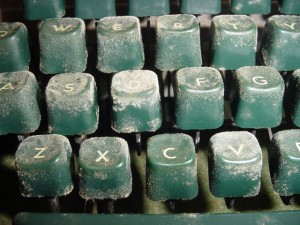 The printing industry was able to greatly expand its capabilities starting in the mid-1800s, thanks to the invention of die casting equipment. Movable typing machines required a large number of letters, punctuation marks and more, all in single units. Thanks to die casting, manufacturers sped up the creation of these individual elements and helped them maintain uniform sizes. This advance in manufacturing technology helped reduce errors and setup times for early printing machines.
The printing industry was able to greatly expand its capabilities starting in the mid-1800s, thanks to the invention of die casting equipment. Movable typing machines required a large number of letters, punctuation marks and more, all in single units. Thanks to die casting, manufacturers sped up the creation of these individual elements and helped them maintain uniform sizes. This advance in manufacturing technology helped reduce errors and setup times for early printing machines.
After that start, die casting quickly spread to other industries and has made our lives easier ever since.
How Did Die Casting Evolve?
The first die casting equipment was a small, hand-operated machine invented in 1838 and patented in 1849. A combination of tin and lead was melted and then poured into a steel mold — this mold was referred to as the “die.” As the metal alloy cooled, it would take the shape of the mold and solidify. This final element taken from the mold is the “casting.”
For the first 30 years, die casting only served to help create type for printers. Brooklyn’s Soss die-casting machine was the first to gain a strong nationwide acceptance and it was also the first to be sold openly in North America. However, starting in the early 1890s, more dies were created in a variety of different shapes. Cash registers, phonographs, frames and other mass-produced elements were being created through die casting as the world entered a new century.
New molds allowed die casting to enter almost every major industry and provide parts for the machinery that was powering the country.
New Alloys Take Shape
Lead and tin were the main metals used in early die casting, and they had significant malleability. Processes moved to safer materials starting in 1914 when zinc and aluminum alloys were introduced, also allowing for stronger creations.
Copper and magnesium alloys were introduced in the next few years, and most of the alloys the industry uses today were available by the mid-1930s. The expansion of materials now allows die casting machines to create a wide range of parts and products optimized for flexibility, heat resistance, erosion or toxicity resistance, repeat use and other characteristics.
Growing Under Pressure
As new alloys were introduced, the die casting process changed to accommodate new needs and new parts creation. In the early days, die casting machinery could only produce a low-pressure injection system to consistently produce quality products. Because of the improvements in the strength and heat resistance of the materials used to develop our machines, they later allowed for higher-pressure situations and processes.
As equipment and manufacturing capabilities improved, new methods were established that operated under moderate pressure and allowed for more flexibility of the shapes crafted. Machinery has also been designed to include moving parts and plates for complex shapes.
Today, a high-pressure casting method has become the standard, and it typically provides a better quality product and a strong finish. The parts die casting create in today’s machinery are strong, have an excellent surface finish and are delivered in extremely high volumes. There are also new alloys with better properties than in the past, which has opened up die casting to new markets.
Premier Engineered Products has been providing die casting and tooling equipment and services for more than 70 years. We have seen the industry change and introduce new machines and automated processes. We understand today’s best practices, so we can deliver high-quality services tomorrow. Contact our team online.


